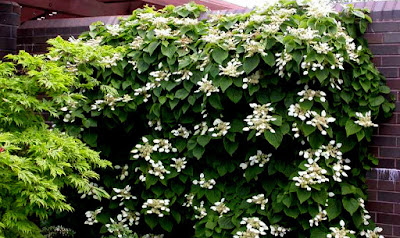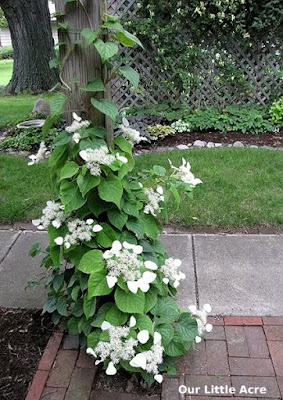Hydrangea anomala is found in southern and central China (Anhui, Fujian, Gansu, Guangdong, Guangxi, Guizhou, Henan, Hubei, Hunan, Jiangxi, Shaanxi, Sichuan, Taiwan, Xizang, Yunnan, Zhejiang) and Bhutan, India, Myanmar, Nepal, Sikkim. They grow in dense to sparse forests in valleys, along stream banks, or on rocky mountain slopes at elevations of 500-2900 meters.
Hydrangea anomala also called as the Japanese climbing-hydrangea, Hydrangea altissima, Hydrangea glabra, Hydrangea glaucophylla, is a species of the genus Hydrangea. This species was described by David Don in 1825.
IDENTIFY HYDRANGEA ANOMALA PLANT
Hydrangea anomala is found in southern and central China (Anhui, Fujian, Gansu, Guangdong, Guangxi, Guizhou, Henan, Hubei, Hunan, Jiangxi, Shaanxi, Sichuan, Taiwan, Xizang, Yunnan, Zhejiang) and Bhutan, India, Myanmar, Nepal, Sikkim. They grow in dense to sparse forests in valleys, along stream banks, or on rocky mountain slopes at elevations of 500-2900 meters.
They are shrubs climbing which reaching 2-4 meters tall or more with gray-brown, robust, glabrous branchlets and thin, loose bark peeled off into fragments when old. The leaves are yellow-brown on both surfaces when dry, elliptic, oblong-ovate, or ovate, 6-17 x 3-10 cm, papery, both surfaces glabrous or abaxially sometimes sparsely brownish pubescent along veins and barbate at vein axils, secondary veins 6-8 on both sides of midvein, abaxially prominent, base cuneate, subrounded, or sometimes shallowly cordate, margin densely serrulate, apex acuminate.
The Japanese climbing-hydrangea is blooms in May-June from the corymbose cymes inflorescence which reaching to 30 cm wide in fruit, pubescent, apex arcuate. The sterile flowers with sepals 4, broadly obovate to suborbicular, 1–2.2 x 1–2.2 cm, margin entire except for a few obtuse teeth. The fertile flowers with calyx tube campanulate, 1–1.5 mm; teeth broadly ovate to triangular, 0.5–0.8 mm. Petals apically connate and forming a calyptra, apex rounded to subacute.
The key to identify this species is: ovary completely inferior; capsule apex truncate; petals apically connate and forming a calyptra; seed wing encircling seed.
HYDRANGEA ANOMALA PLANT CARE AND CULTURE
Cultural information should only be used as a guide, and should be to be adapted to suit you. Your physical location; where you grow your plants, how much time you have to devote to their care, and many other factors, will need to be taken into account. Only then can you decide on the cultural methods that best suit you and your plants.
Light:
Hydrangea anomala love the warm morning sun, but they dislike the heat of the afternoon (can grow in full sun with adequate soil moisture). The best place to plant this species is in a sheltered location with sunny mornings and shady afternoons. Avoid planting directly underneath trees, which can lead to competition for water and nutrients. Although they can be successfully grown in full shade, they will not bloom well.
Temperature:
Keep the Japanese climbing-hydrangea in a cool location, from 18° to 24°C. This plant grow well and are reliably winter hardy. Cold winters and late spring frosts can often kill flower buds, preventing plants from blooming in the spring.
Substrate, growing media:
Hydrangea anomala are best planted in soil that has been amended with adequate amounts of organic matter, such as compost, leaf mold, or well-composted manure. While most hydrangeas grow better in soil that is lower in pH (acidic), they will tolerate higher pH soils (alkaline) quite well.
Watering and humidity:
The Japanese climbing-hydrangea plant prefer consistent moisture but dislike wet feet. Mulch to help conserve moisture and cool the root system. A two- to three-inch layer of mulch will help to conserve moisture.
Fertilizer:
Fertilizing is generally not recommended unless a nutrient deficiency is observed. This plants may need little fertilizer in rich soil with organic matter applied yearly. Avoid using too much nitrogen - this can encourage foliage growth at the expense of blooms.
Pruning:
Hydrangea anomala can be left unpruned and only blackened winter-injured tips removed in the spring. Dead or diseased branches can be pruned out at any time of the year.

















COMMENTS